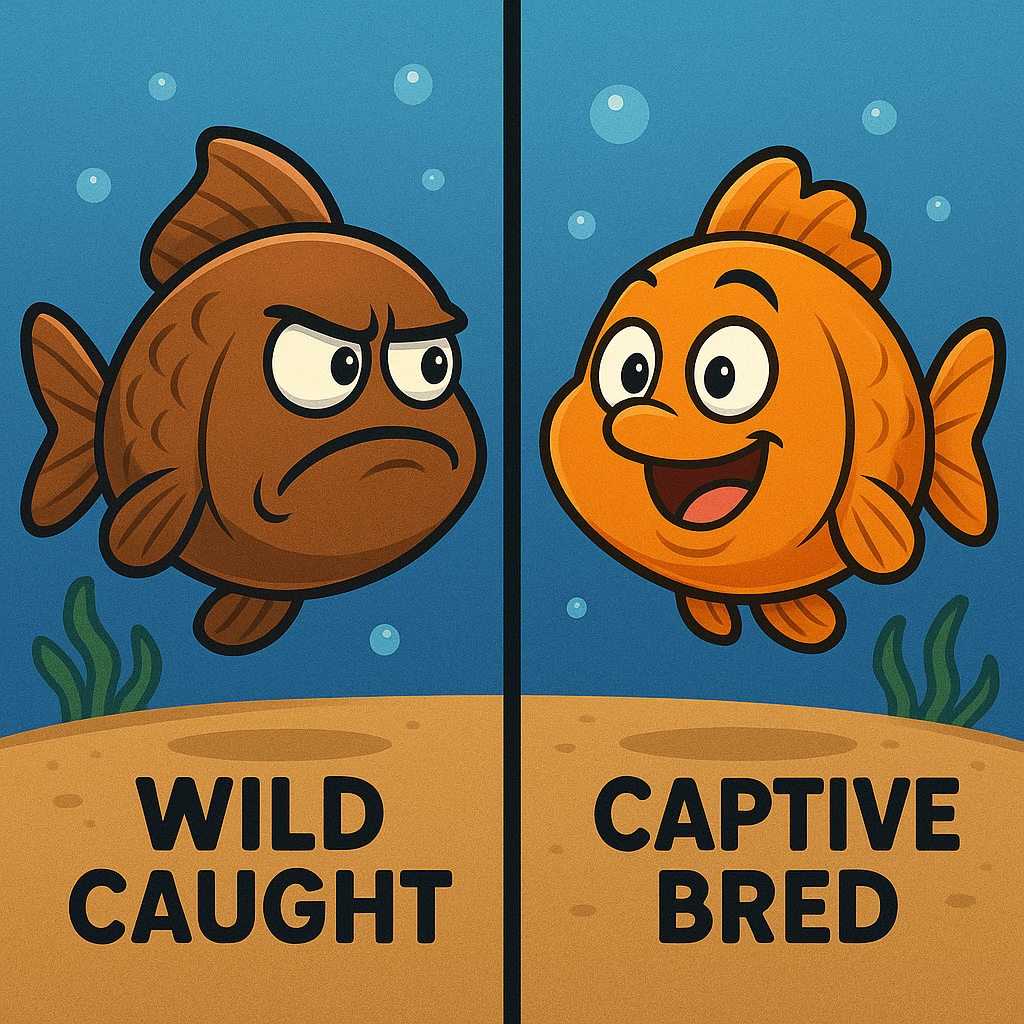Mixing Wild-Caught & Captive-Bred Fish in Aquariums
🐠 Mixing Wild-Caught & Captive-Bred Fish in Aquariums
Adding wild-caught fish to a tank with captive-bred fish is a common topic in the hobby. It can be rewarding, but also risky if not handled correctly. Here’s a detailed breakdown:
🦠 1. Health & Disease Concerns
- Parasites & Pathogens: Wild fish are often exposed to a much wider range of parasites, bacteria, and protozoa (like gill flukes, nematodes, or ich). Captive-bred fish may have weaker immune defenses against these.
- Stress Factor: Wild fish are already stressed from capture, holding facilities, and transport. Stress lowers immunity, making both them and tankmates more vulnerable.
- Quarantine Protocols: A minimum 4–6 week quarantine tank with observation is strongly recommended. During this time:
- Monitor for external parasites (flashing, rubbing, rapid gill movement).
- Check for internal parasites (stringy white feces, loss of appetite).
- Consider prophylactic treatments like praziquantel, metronidazole, or salt baths (depending on species).
🌊 2. Behavior & Adaptation Differences
- Feeding Habits:
- Wild fish often ignore flakes and pellets at first. They are used to live foods (worms, insects, small crustaceans).
- Captive-bred fish transition easily to prepared foods.
- You may need to feed live/frozen foods while slowly training wild fish onto pellets.
- Temperament:
- Wild fish may be shy, skittish, or aggressive depending on species.
- Captive-bred fish are typically bolder and more tolerant of tankmates.
- Mixing the two may cause stress if the wild fish can’t adapt to captive behavior.
💧 3. Water Chemistry & Environment
- Wild Fish: Often have very specific water requirements (e.g., Amazonian wild discus prefer very soft, acidic water pH 5.0–6.0).
- Captive-Bred Fish: Usually more tolerant of a wider range of pH, hardness, and temperature since they’ve been raised in aquaculture facilities.
- Conflict: If you mix them, you usually need to adjust water closer to the wild fish’s native range, since they are less adaptable.
- Habitat Needs:
- Wild-caught fish often expect lots of cover (driftwood, leaf litter, rocks).
- Captive-bred fish may do fine in bare or minimal setups.
🧬 4. Genetics & Breeding Considerations
- Genetic Benefits: Breeding wild with captive can restore vigor, stronger immunity, and natural coloration (sometimes captive lines lose vibrancy over generations).
- Drawbacks: Mixing localities (e.g., a Rio Xingu pleco with a Tocantins pleco) can dilute geographic purity, making it harder for conservationists or hobbyists to preserve natural strains.
- Breeding Behavior: Wild fish may be more selective or harder to breed in captivity, while captive-bred strains are more conditioned to reproduce in aquariums.
⚙️ 5. Practical Considerations for Mixing
- Quarantine First – Always isolate wild-caught fish before mixing.
- Diet Transition – Start with live/frozen foods, slowly introduce prepared pellets.
- Tank Size & Territory – Provide enough space, hiding spots, and structure to prevent bullying.
- Observation – Watch closely for signs of stress (clamped fins, rapid breathing, hiding excessively).
- Backup Plan – Be ready to rehome or separate if aggression or disease outbreaks occur.
✅ Summary
You can mix wild-caught and captive-bred fish, but only with patience, quarantine, and careful management.
- Best Case: Wild fish thrive, adapt to prepared foods, and even enhance captive lines through breeding.
- Worst Case: They introduce disease, stress captive fish, or fail to adapt and waste away.

Powered by Lightspeed
Display prices in:USD